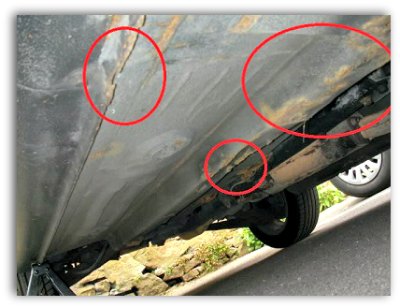
How to Import a Car and Avoid Costly Mistakes
3-minute read
New Zealand has quite an old vehicle fleet compared to many other countries. The average age of a car is about 13 years.
This is set to change. As part of efforts to reduce vehicle emissions, the government introduced tighter car import rules to restrict older used vehicles.
Newer vehicles are generally more fuel efficient, more environmentally friendly and safer than earlier models due to improvements in engine and fuel technology, materials and aerodynamics. The drawback of newer models is they’re more expensive, which is why many New Zealanders choose to buy older and cheaper used imports.
Car imports provide potential you, the buyer, with choices and also help ensure New Zealand-new used vehicles remain competitively priced.
Sounds like an easy business – head offshore and buy, ship the vehicle back here. Well, things are never quite that simple.
Maybe once it was easy money, but today it’s a different ball game, played out under strict government rules and regulations. Second-hand vehicles are not just selected offshore on price or popularity.
On arrival, cars must comply with set standards based on structural integrity, vehicle safety and emission standards. It is paramount to do a thorough pre-purchase check before committing to purchase.
Probably the most at-risk group is owners who are planning a permanent move to New Zealand and want to import their own vehicle they have owned overseas. These people face the biggest surprise of rejection during the compliance inspection.
Please do NOT assume that because a vehicle has been registered and operated in another country previously that it can be used in NZ.
A vehicle may tick all the right compliance boxes, but it’s the structural condition that can catch owners out. Part of the compliance check is an invasive structural inspection, to ensure there are no major corrosion issues or sub-standard repairs.
 Used cars imported from the United Kingdom or Japan can arrive with major corrosion issues due to salt used to de-ice roads, while in Australia there is no regular road-worthiness inspection to check for body deterioration or accident damage.
Used cars imported from the United Kingdom or Japan can arrive with major corrosion issues due to salt used to de-ice roads, while in Australia there is no regular road-worthiness inspection to check for body deterioration or accident damage.
The invasive inspection on arrival involves the removal of some interior trim to check structural areas such as seatbelt mounting points, while the chassis is inspected for structural weaknesses. Failure in these areas usually means major repair involving sign-off by an approved certifier.
Repairs must be done to extremely high standards, and sign off is required in stages.
I recently spoke to the owner and panel beater repairing a 1967 Mustang imported from Australia. The car had been legally driven on public roads for 10 years before being shipped.
The car qualified for entry, subject to the invasive inspection. The car failed the inspection due to both corrosion and chassis issues. The result was a costly rebuild, requiring major repairs to almost every exterior panel.
For owners, costs can spiral out of control. To make matters worse, because the vehicle had not been cleaned properly, it meant that MPI (Ministry for Primary Industries) requested to do steam-cleaning.
Kiwis returning home or new immigrants often have a personal attachment to their vehicles, or believe they are better importing what they know rather than purchasing on arrival.
The reality is the used-car market here is extremely competitive and specification levels are high. That personal attachment would have to be very strong if a model was equal to what could be bought locally.
So if you are thinking of importing that dream car, make sure all the checks are done and seek advice from a professional who knows the pitfalls.
And don’t forget about that full under-body and structural inspection before shipping.
Source: NZ Herald
Question: Have you had any problems with used imports? Do you have an advice for other readers? Leave your comments below.
P.S. Easy Freight Ltd helps New Zealand importers & exporters to save money on international freight and reduce mistakes by guiding how to comply with Customs and biosecurity rules.
➔ Contact us now to learn how we can assist you.
